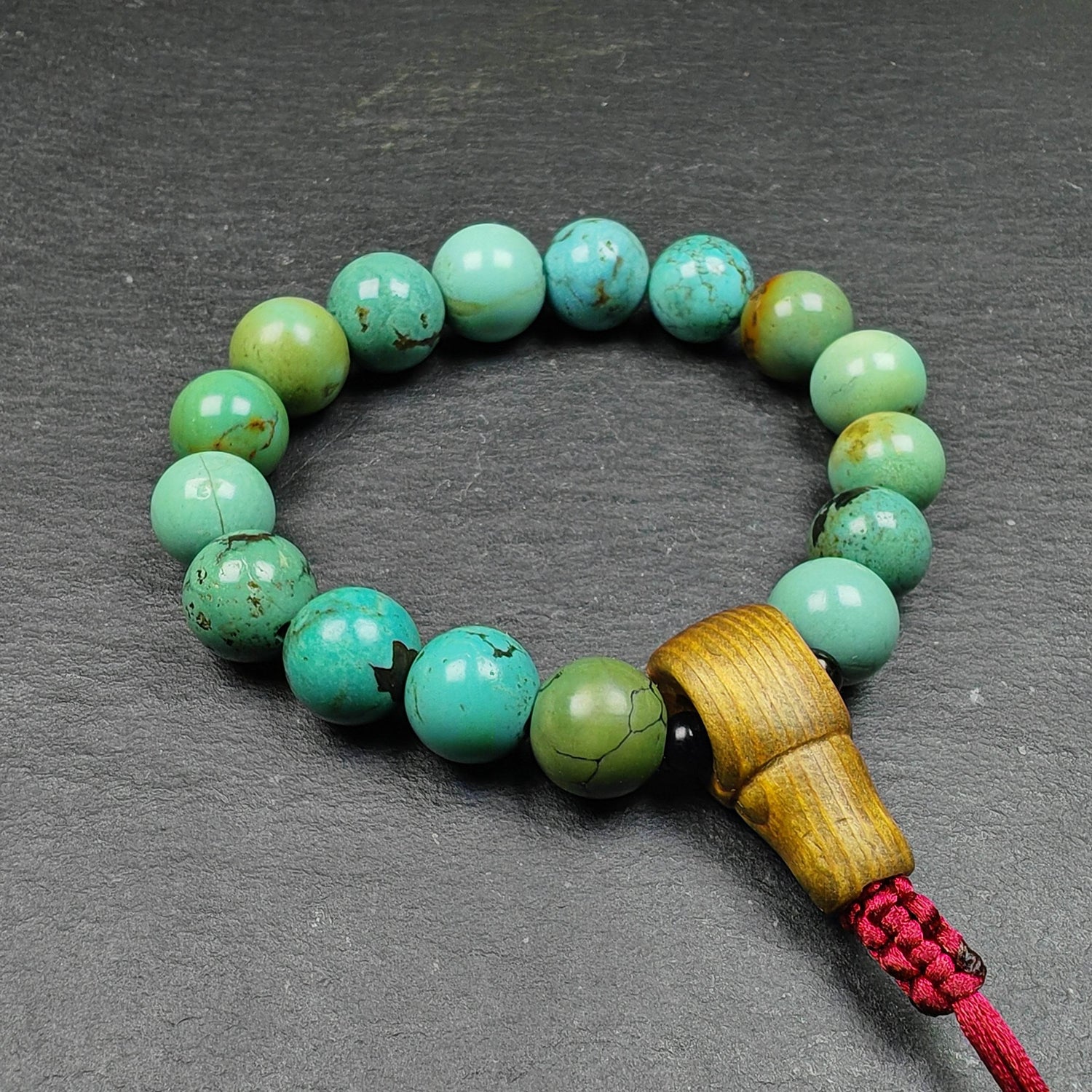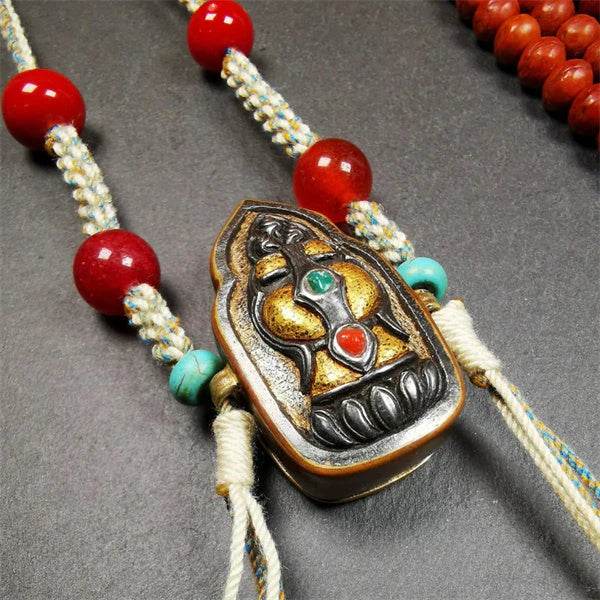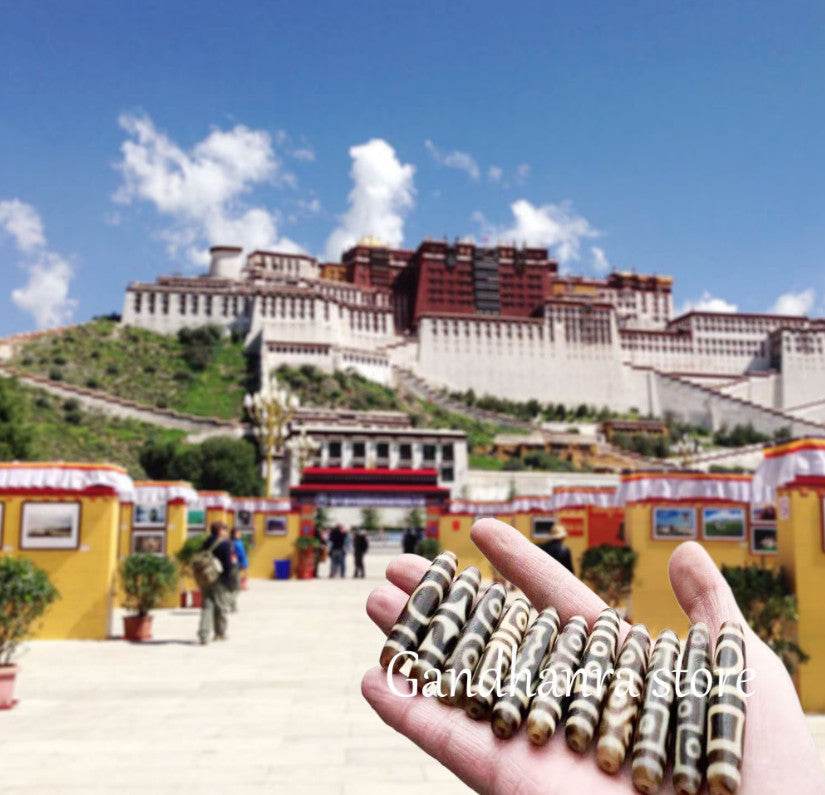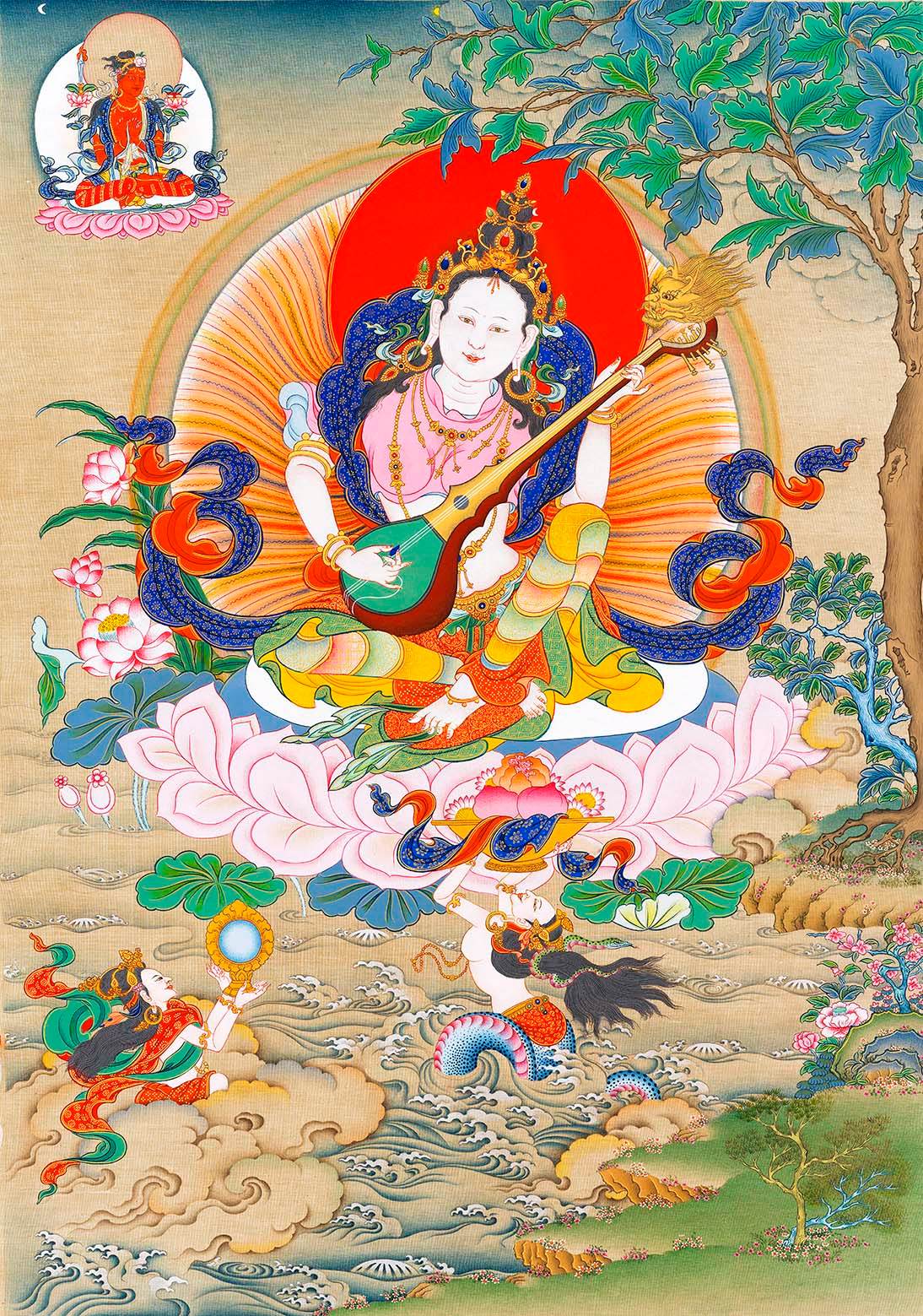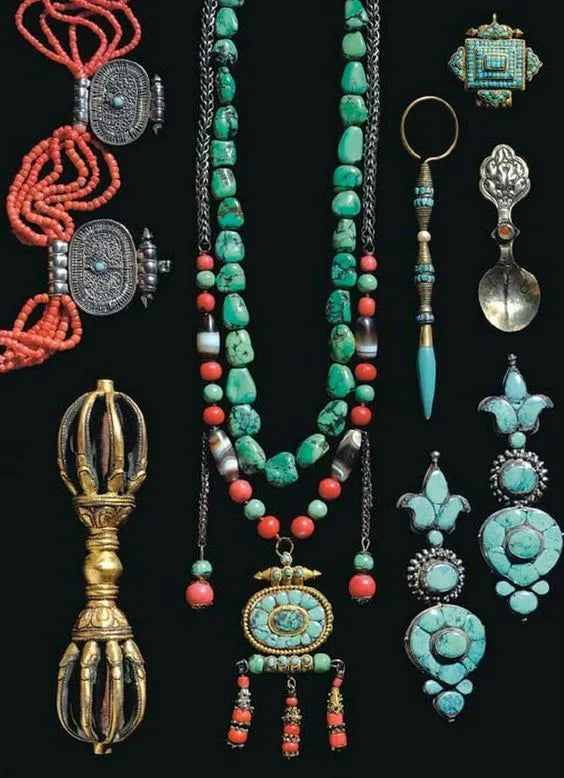
100 Days of Tibetan Accessories Without Repeats ▎ The Secrets of Tibetan Fashion

A Tibetan girl wearing turquoise earrings. Image: Pinterest.
The spiritual significance of concealing and revealing.
Tibetan culture is vast, profound, and enduring, with a distinctive and vibrant character. Among its many art forms, accessory art stands out as particularly magnificent and significant. Within the diverse array of Tibetan artistic traditions, ornaments—with their unique shapes, vivid colors, rich variety, and deep spiritual meaning—always shine brilliantly in the kaleidoscope of visual arts, leaving a lasting first impression of Tibet's allure.




Exquisite Tibetan Ornaments: A Seamless Fusion of Aesthetic Value and Cultural Heritage
Image: Pinterest
Among the many visual records of Tibet, our eyes and hearts are invariably drawn to the pure, moving, and primal beauty of its richly artistic ornaments. While serving aesthetic purposes, these accessories also reflect the unique customs and zeitgeist of Tibetan life. Over time, they have evolved into a captivating ethnic culture—and a global cultural treasure.

Exquisite Tibetan Ornaments Image: Pinterest.
Generally, accessories primarily serve to enhance appearance, but in Tibet—with its distinct geography and culture—their significance transcends mere adornment, carrying profound spiritual meaning.
This means Tibetan ornaments are used for multiple purposes. For instance, they beautify daily attire while also functioning as talismans to invoke blessings for the wearer. Beyond this, they subtly convey social status and symbolize the owner’s economic standing.

Pastoral Man, 20th Century
Image: Michael Backman Ltd
Status Symbols and Identity Codes
The extraordinary significance of ornaments in Tibet is evident through historical records.
British explorer William Gill (1843–1883), in his 1883 book The River of Golden Sand, described his Tibetan landlady: "She seemed to sleep in her jewelry, for whether dawn or dusk, we always saw her adorned with what appeared rather cumbersome pieces... We tried to buy them, but she refused. She said it would be like killing her before her time (clearly, she valued those ornaments more than life itself)."

Two Noblewomen in Traditional Attire, Tibet, 1938-1939
Photography: Ernst Schäfer
American missionary Marion H. Duncan (1896–1977), in his 1896 book The Yangtze and The Yak, noted: "In Tibet, a woman seen without the customary amount of jewelry—a marker of wealth—would feel more ashamed than if caught bare-waisted on a hot day."

Image: Thubten Gyatso
Of course, such records may seem somewhat unbelievable to us with our modern perspective. We cannot judge whether it is slightly exaggerated to view a foreign culture from the perspective of another culture of the last century, as it may lack objectivity. However, these writings at least reflect the incredible importance of ornaments in the lives of the people in Tibet, especially for women.
 Image: Thubten Gyatso
Image: Thubten Gyatso
Women in aristocratic families typically wore an abundance of jewelry, sometimes to the point of hindering movement. Yet, publicly displaying these ornaments remained essential. Opulent adornments not only signified their noble status and their family's social standing but also served as "wealth magnets," believed to attract good fortune and prosperity. During important social events, wearing every piece of jewelry became a prime opportunity to showcase their splendor.




Image: Thubten Gyatso
For women, beyond daily adornment, ornaments served more as displays of wealth and social competition. For men, however, they carried greater political significance—especially among the nobility holding government positions. These men rarely had the freedom to choose ornaments based on personal taste; instead, they wore only those befitting their official titles, using them to distinguish their rank from others. In this context, ornaments became potent symbols of prestige and status.

Image: Sir Philip Neame
Turquoise and Red Coral
The distinct character of Tibetan ornaments stems largely from their rare and unique materials. Beyond the precious metals like gold and silver commonly used in jewelry-making, turquoise and red coral stand out as the most treasured and widely utilized natural gemstones in Tibetan adornments.

Coral and Turquoise Antique Necklace, Private Collection, 1930s
Image: Pinterest
During the Qing Dynasty, Zhou Ailian wrote in "Journey to Tibet" some passages describing the adornments of the Tibetan people. "There are many turquoise in Tibet, and those with a color like clear sky after rain are extremely rare. They are also very small, with few larger than a grain of rice… They are often used to adorn the head and ears, appearing very precious." "Many use coral as jewelry, either as beads or necklaces, with the most common color being deep red. In recent times, scholars and officials prefer the lighter colored coral, resembling the root of spinach, which is quite hard to find in Tibet." "Their hair is not combed, with women braiding dozens or even hundreds of braids, using butter as pomade. The wealthy decorate their braids with coral, pearls, and turquoise. Earrings are as large as a bolt, adorned with precious gems, some as large as dragon eyes, with a hole running straight through from top to bottom, threaded with iron wire..."

Antique Tibetan Ornament with Coral and Turquoise Inlay
Image: Pinterest
Historical accounts reveal the prized status of turquoise and coral in Tibet. Their value stems partly from their natural, vibrant hues—irreplicable by even the most skilled artisans—and partly from their medicinal properties, believed to heal ailments when worn close to the body. Particularly the vivid red coral, dripping with color, has long been regarded in Tibetan tradition as a potent protective talisman, warding off evil while also staunching blood and calming the mind.

Content on Mineral-Based Medicine in Medical Thangkas
(Note: "Medical Thangkas" refers to illustrated Tibetan medical scroll paintings used to visualize pharmacological knowledge)
Traditional Tibetan medicine has always included the use of minerals in treatment. Examples include the Eight Treasures and the Eight Irons, where "treasures" refer to natural minerals such as coral, turquoise, and agate, and "irons" refer to metals like gold, silver, and copper. The important medical classics of ancient Tibetan medicine, "The Four Tantras," record over nine hundred kinds of medicines, with mineral medicines accounting for one fifth of them.
Despite this, in Tibetan beliefs, precious natural substances gifted by nature are not suitable for extensive mining and excavation, as it would be seen as sacrilegious. The traditional values passed down through generations here already embody respect for nature and the modern concept of sustainable development and environmental protection.
Sogdian, Alung, and Egor
A particularly noteworthy Tibetan ornament is the distinctive elongated earring worn by men, called "Sogdian" in Tibetan. Typically fashioned in slender segments, it alternates flawless white pearls with turquoise stones of lake-like depth.

Actor Awang Renqing plays the young master of the mansion in the movie and he wears ear ornaments called Sogdian.




Tibet, 1938-1939
Photography: Ernst Schäfer
 The turquoise earrings worn by actor Lobsang Chunpai are Alung-style.
The turquoise earrings worn by actor Lobsang Chunpai are Alung-style.
Tibet, Early 20th Century
Dimensions: 13.5cm long, 43g weight
Materials: Gold, Coral, Turquoise
Image: Michael Backman Ltd
 A Pair of Antique Egor Earrings
A Pair of Antique Egor EarringsImage: tibetankeepsakes

Image: Victoria and Albert Museum
Auspicious Motifs
Overall, Tibetan earrings are usually made of materials such as gold, silver, and copper, with additional embellishments of gemstones like jade, agate, coral, turquoise, amber, and other precious stones. The shining gold and silver reflect the wealth and status of the owner, and are believed to have the power to detect poisons. The gemstones, on the other hand, are considered to possess certain energies that can protect the wearer from harm, bring good fortune, and symbolize auspiciousness.
 Antique silver earrings with green turquoise inlay in a water droplet lotus design.
Antique silver earrings with green turquoise inlay in a water droplet lotus design.Image: tibetankeepsakes
In addition to creative gemstones and color combinations, a piece of jewelry will often be specially crafted with specific patterns that embody certain spiritual metaphors. Common patterns include goldfish, lotus flowers, water droplets, the six-word mantra, and the eight auspicious symbols. Jewelry featuring goldfish and lotus flower patterns are usually worn to seek good luck and auspiciousness; auspicious knots reflect the infinite wisdom and compassion of the Buddha; water droplets symbolize purity; and conch shells symbolize listening to the sound of wisdom.
These patterns not only represent wishes for blessings and prayers, but also symbolize the individual's spiritual devotion and close connection to the teachings of Buddhism.
 Turquoise Teardrop and Lotus Earrings
Turquoise Teardrop and Lotus EarringsEarly 20th Century
Image: Michael Backman Ltd
Compared to traditional Tibetan ornaments, modern pieces have undergone simplification in craftsmanship, materials, design details, artistic styles, and even the scale of adornment. Improved social status for women has liberated them from being confined to domestic roles as mere appendages to men, while evolving lifestyles have subtly diminished the ornaments' traditional significance beyond decoration.
The intricate artistry and rich cultural layers once embedded in these adornments have faded. Antique Tibetan ornaments are now treasured rarities—preserved in museums or passed among collectors—as priceless relics of an era.

Image: Pinterest
The enduring allure of Tibetan ornaments stems not only from the bold, imaginative use of natural materials by the highland's ingenious artisans, but also from the profound cultural and spiritual concepts they embody.
The unique character shaped by the plateau's environment finds perfect harmony in these adornments, elevating their artistic splendor. Choosing traditional Tibetan ornaments transcends mere aesthetics—it is an act of reverence, a continuation and transmission of an ancient civilization.
 Photography: Frederic Lemallet
Photography: Frederic Lemallet


